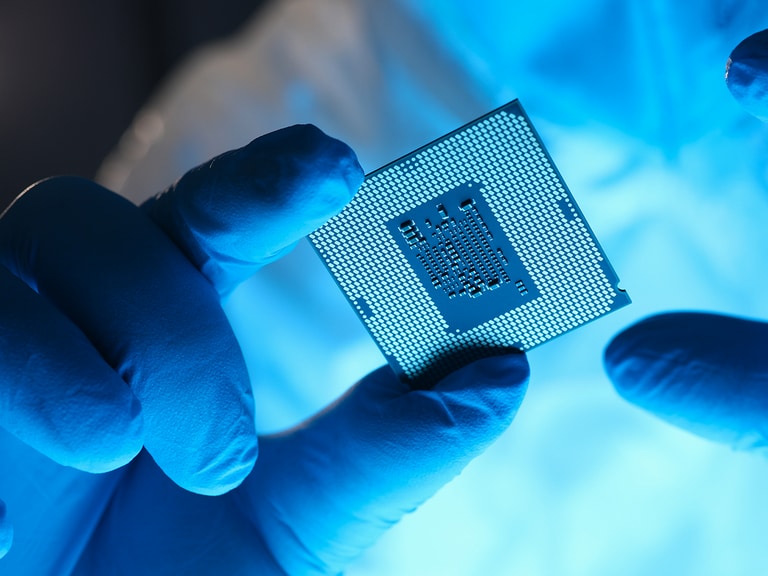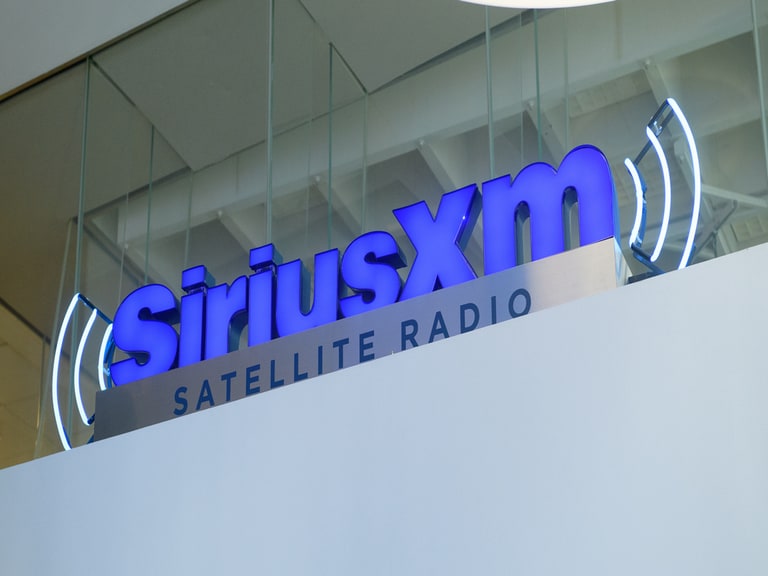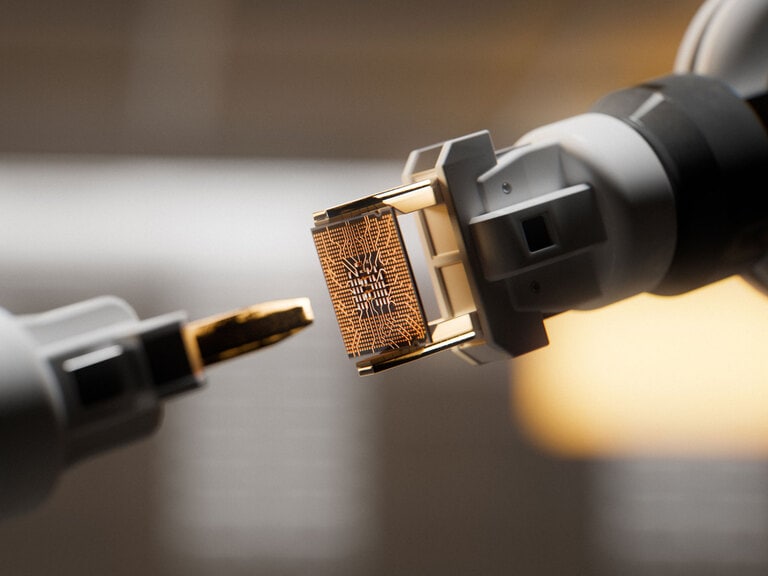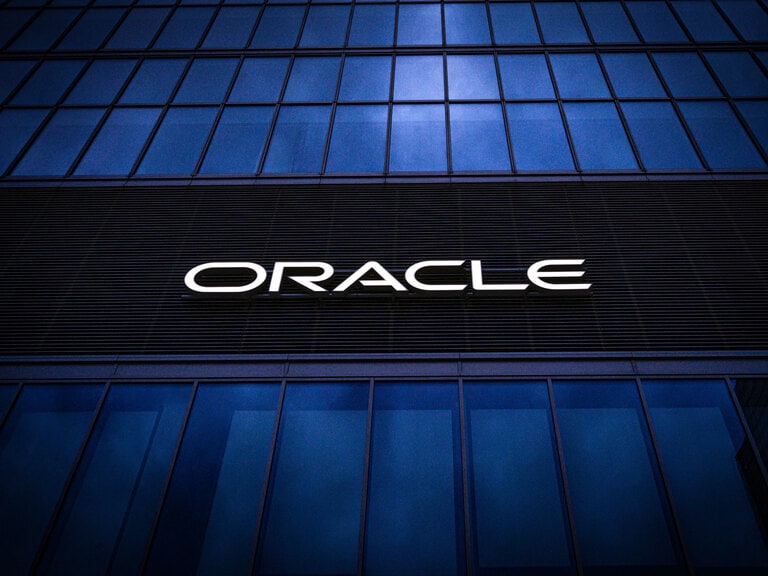Exploring the great unknown is risky business, but artificial intelligence (AI) is expected to power autonomous spacecraft that could help unlock the universe’s mysteries. Closer to earth, the technology can also be used in satellite management.
- The Pentagon is using AI in satellite constellation management, while NASA is exploring how chatbots can enable mission control to interact with spacecraft.
- The global space autonomous navigation systems market could grow at a CAGR of 15.4% between 2023 and 2033.
- How to invest in AI in space: the ARK Space Exploration and Innovation ETF is up 18% in the past six months.
While the explosion of generative AI has raised questions about how the technology may transform life on earth — for better or for worse — AI is also heading into space.
The National Reconnaissance Office (NRO), the Pentagon’s space-based surveillance agency, announced in May that it’s considering the use of AI and machine learning to improve satellite constellation management.
“We’re going from tens of satellites to hundreds of satellites in orbit. We know that users, a broad spectrum of users, want data as quickly as possible. So we have to develop the tools,” NRO director Chris Scolese said at the 2023 GEOINT Symposium, according to industry news publication Defense One.
AI could help the NRO to process and deliver data much faster to users on the ground, who can then take decisive action, added Scolese.
Meanwhile, NASA is apparently developing a ChatGPT-like large language model that it hopes will enable astronauts to communicate with their space vehicles and mission controllers.
“The idea is to get to a point where we have conversational interactions with space vehicles, and they [are] also talking back to us on alerts, [and sharing] interesting findings they see in the solar system and beyond,” said Dr Larissa Suzuki, a visiting researcher at NASA, at a meeting on next-generation space communication at London’s Institute of Electrical and Electronics Engineers, reported The Guardian.
Lockheed Martin’s vision for space exploration
AI is being used to both enhance satellite operations and enable deeper space exploration.
In April, Microsoft’s [MSFT] Azure Space demonstrated how generative AI can be leveraged by the Pentagon to pinpoint satellite data and build up a picture of what’s happening in a global hotspot.
“Azure Space has been committed to enabling people to achieve more, both on and off the planet,” Stephen Kitay, senior director of Microsoft Azure Space, told GeekWire, adding that its technologies can help in “unlocking the full potential of what’s possible in space”.
Lockheed Martin [LMT] is exploring how AI can advance the space industry through its Destination: Space 2050 project. While engineers build spacecraft with hundreds, if not thousands, of scenarios and possibilities in mind, the defence giant has developed an autonomous system that enables AI systems to respond to unforeseen events and environments.
“This means the technology would help satellites avoid collisions in orbit and enable deep space probes to squeeze in more research in short missions under harsh conditions,” stated the company in a press release last year.
Autonomous systems should enable deeper exploration
With the space exploration race heating up and India and China continuing to take moonshots, the demand for autonomous technology is going to continue to rise. Vehicles powered by AI could facilitate decision-making without involvement from mission control.
As the European Space Agency put it: “Autonomous spacecraft that use AI to take care of themselves would be very useful for exploring new parts of the solar system and reducing mission costs.”
According to research published by the Market Statsville Group at the end of last year, the global space autonomous navigation systems market size is expected to grow at a CAGR of 15.4% between 2023 and 2033.
The further into space we explore, the bigger a role AI could play in analysing the vast amount of data collected along the way.
AI possibilities could be endless
As the space race continues to drive innovation, more private players in the industry are likely to go public. It’s long been rumoured that Elon Musk might look to list Starlink, the satellite division of SpaceX.
“As space becomes a more contested environment, the use of AI will be critical to future needs… Future areas for exploration are across the satellite mission lifecycle — from design to testing to operations,” according to Lori Gordon, systems director at non-profit the Aerospace Corporation, where she focuses on cybersecurity and infrastructure risk and resilience.
AI could also end up being used to automatically identify and track objects. And it could allow robotic spacecraft to make decisions about where and what to explore without the need for them to be given instructions by mission control back on earth.
Not without its risks
The drive to explore the universe and unlock some of its mysteries will be inherently fraught with danger. This is why AI will be a key driving force behind space exploration in the decades to come.
As David Lackner, senior manager of strategy and business development at Lockheed Martin, explained during a company webinar last month: “You have to have something that is super autonomous that can deal with unknown unknowns. We’ve got some really interesting causal autonomy tools that … allow the AI to be super smart about running into something that it hasn’t encountered before.”
How to invest in the AI space race
ETFs, or exchange-traded funds, offer an economical and diversified way to invest in a variety of stocks within a particular theme.
Funds in focus: the ARK Space Exploration and Innovation ETF
While there’s no fund focused specifically on the application of AI in the space industry, there are a few different ways for investors to approach the theme.
The ARK Space Exploration and Innovation ETF [ARKX] holds companies advancing space operations through technologies including AI and robotics. As of 31 March, the industrials sector accounts for 55.1% of the portfolio, followed by information technology (24.5%), communication services (10.4%) and consumer discretionary (4.0%). The fund is up 18.1% in the past six months.
The SPDR Kensho Final Frontiers ETF [ROKT] is a broad play on the components that make up the space supply chain. As of 14 July, aerospace and defence stocks account for 55.87% of the portfolio, while electronic equipment and instruments, industrial machinery and semiconductors are just a few of the other sectors the fund offers at an exposure of less than 8%. The fund is up 9.8% in the past six months.
The Procure Space ETF [UFO] offers broad exposure to the space industry. As of 30 June, the media and communications sector makes up 48.43% of the portfolio, followed by industrials (35.63%), technology (10.40%), consumer discretionary (4.86%) and materials (0.68%). The fund is down 4.3% in the past six months.
Disclaimer Past performance is not a reliable indicator of future results.
CMC Markets is an execution-only service provider. The material (whether or not it states any opinions) is for general information purposes only, and does not take into account your personal circumstances or objectives. Nothing in this material is (or should be considered to be) financial, investment or other advice on which reliance should be placed. No opinion given in the material constitutes a recommendation by CMC Markets or the author that any particular investment, security, transaction or investment strategy is suitable for any specific person.
The material has not been prepared in accordance with legal requirements designed to promote the independence of investment research. Although we are not specifically prevented from dealing before providing this material, we do not seek to take advantage of the material prior to its dissemination.
CMC Markets does not endorse or offer opinion on the trading strategies used by the author. Their trading strategies do not guarantee any return and CMC Markets shall not be held responsible for any loss that you may incur, either directly or indirectly, arising from any investment based on any information contained herein.
*Tax treatment depends on individual circumstances and can change or may differ in a jurisdiction other than the UK.
Continue reading for FREE
- Includes free newsletter updates, unsubscribe anytime. Privacy policy





